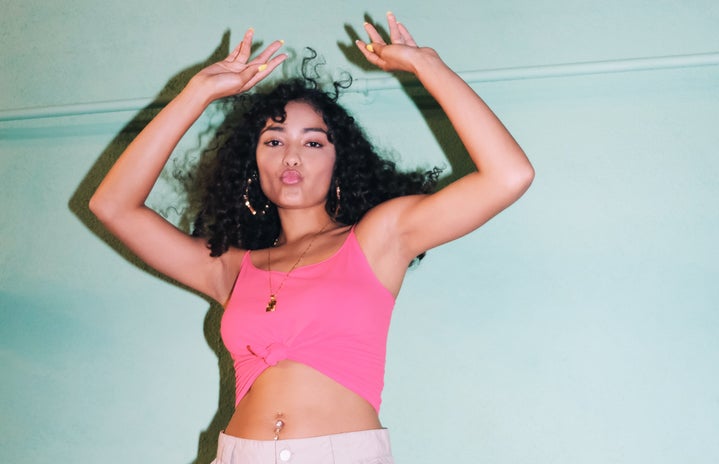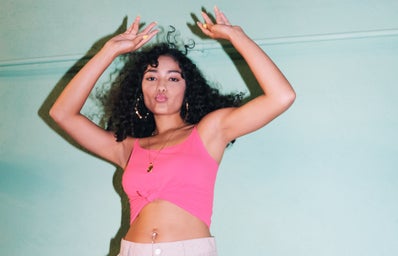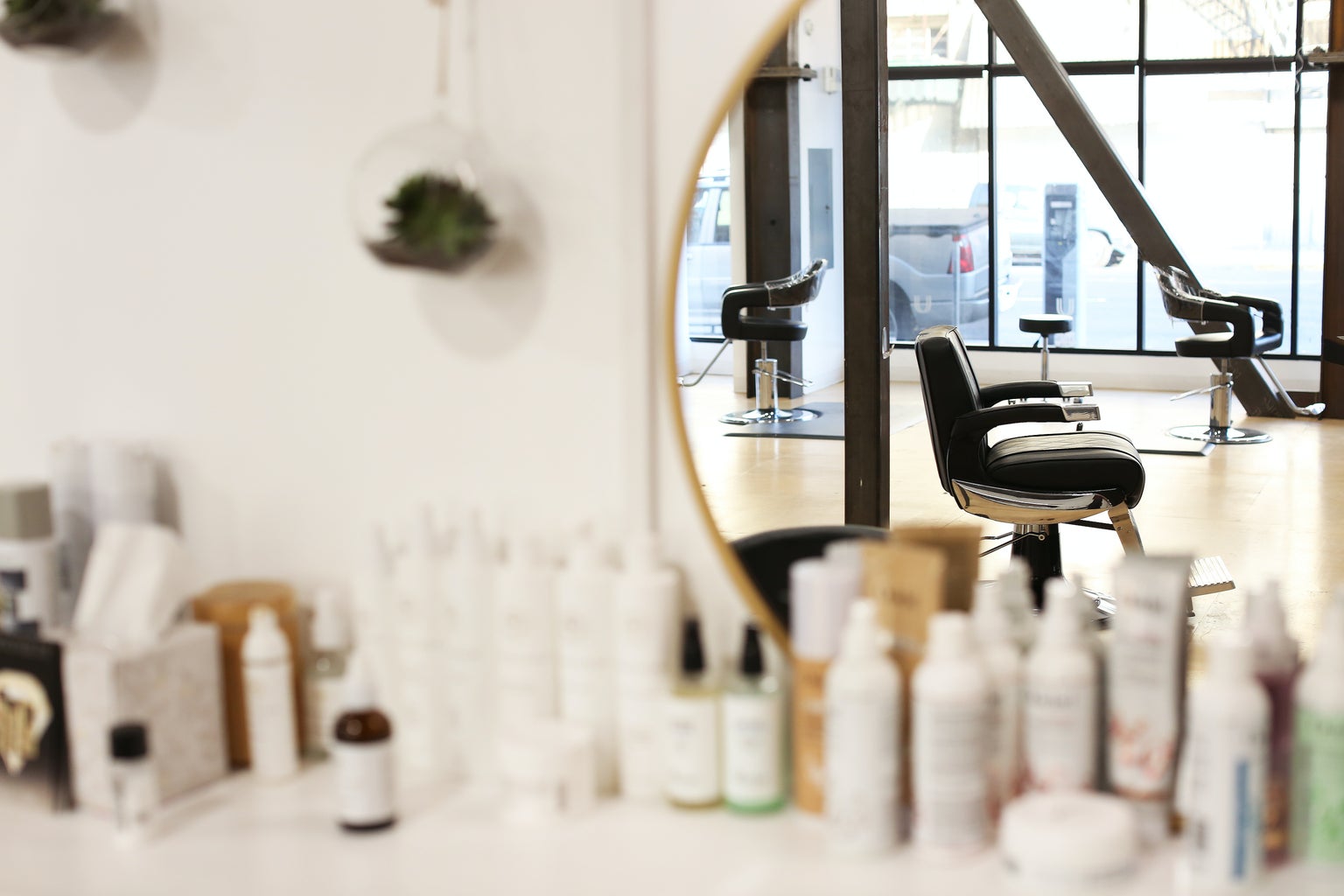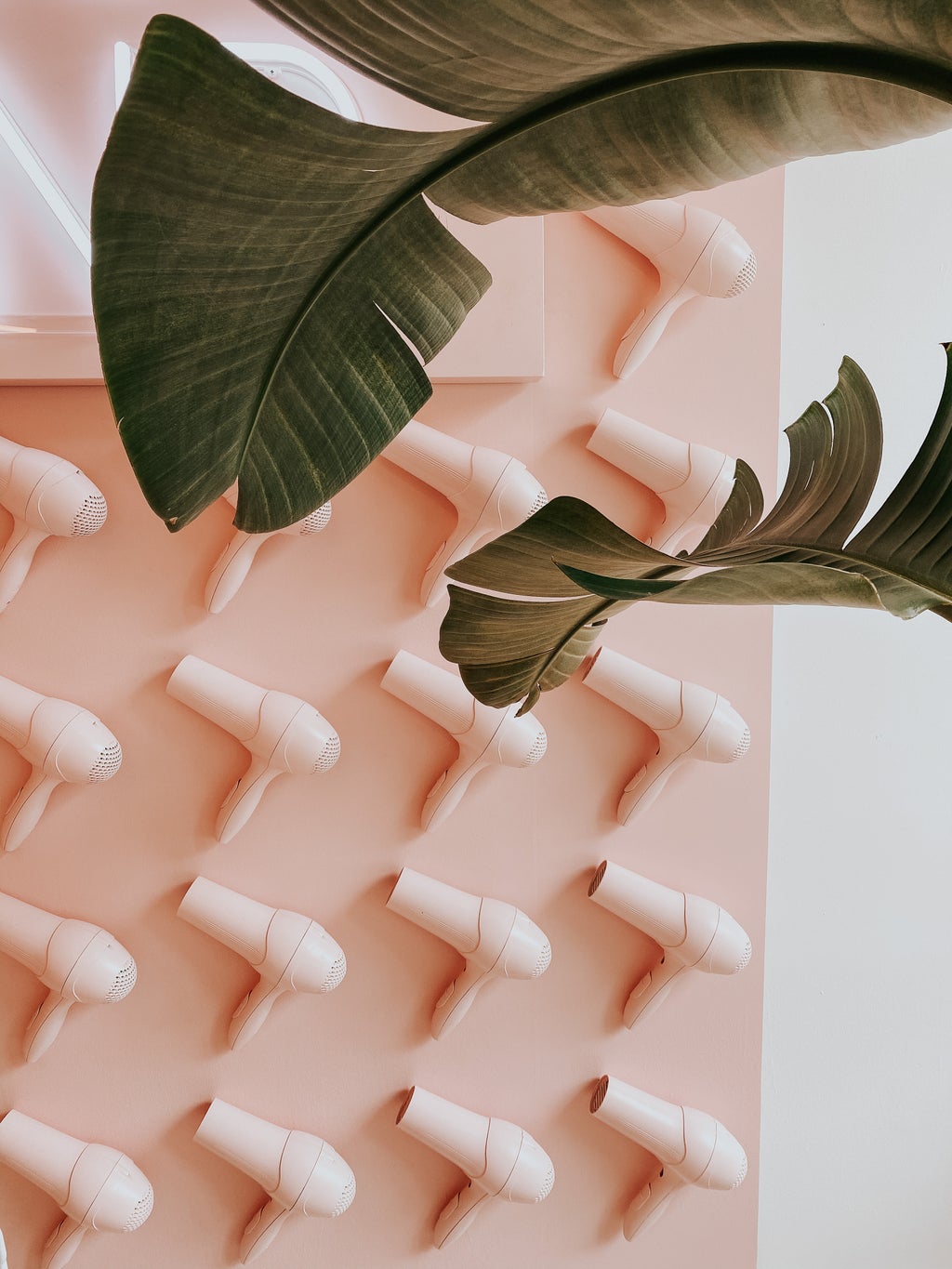For most of my life, I’ve been at war with my natural hair.
I spent years trying to tame my hair into the type my friends had: effortlessly pin-straight, frizz-less, shiny hair. The only hair type people seemed to find most beautiful, put-together, and even professional, was hair that looked nothing like mine. Most of my earlier years were spent thinking I had to measure up to this hair standard to be taken seriously or be considered beautiful.
I spent most of my high school and college years sacrificing sleep to straighten my hair into submission at 5 AM every morning. I’d insist that my hairdresser thin my volume out for me until my hair was thin and flat. I would refuse to leave the house without doing my hair.
For the past 3 years, I wore it in a bun, wet out of the shower, because I was just exhausted and found my hair to be a chore. No one else I knew, including my mom, seemed like they needed to spend as much time investing in figuring out their hair.
There is significantly less information available about curly and wavy hair than there is for straight hair. It’s easy to feel lost or for your natural hair to be a source of shame or insecurity when you have no idea how to make it look and feel healthy and beautiful.
This whole past year, however, I firmly decided that I would dedicate time to taking proper care of my hair.
It began with a lot of research, and a lot of time tinkering at the impenetrable wall of hair products at the drugstore. A lot of this process will be experimenting and finding what works for you. You’re gonna spend money, and you’re going to get frustrated at times, but I promise it’s worth it when you hit a goldmine with the right product or hair routine. It’ll also be a lot easier at this point to establish a curly hair care routine, which will take surprisingly less time than you might think.
Here are a few tips that might give you a jumping-off point in your curly hair journey.
- Figure out your hair type and find products made for you
-
Determining what products suit your hair type is the most time-consuming part. I’ve been sampling different products for about six months now, noting their pros and cons for my hair type in terms of qualities like look and feel. For example, if you hair that airs more on the wavy side (types 1 to 2C) than full-on curls (types 3A to 4C), you should probably stay away from very hydrating products, as these might make your hair greasy or weigh down your curls. If you like the hydration a product is giving you, though, you could always try using a smaller quantity of it.
When washing your hair, make sure you have a shampoo and a conditioner that are geared specifically toward curly or wavy hair. Some brands I like are Shea Moisture and Moroccan Oil. I’ve been able to dial back my washing schedule to every second day or so, because I realized I was only washing my hair so frequently because I thought it would restore moisture or help restore some of its body. Now I realize it’s actually quite the opposite, and these products have really helped my curl longevity and hydration.
- Stop using bath towels to dry your hair!
-
One of the biggest changes I made for my hair was to stop wrapping it in a bath towel when I got out of the shower. Regular towels can cause damage to your hair, as well as making it frizz and cause your curls to lose their shape. Instead, plop your hair into a microfibre towel or a t-shirt. (In my experience, any old cotton tee works wonderfully). I noticed I have less breakage and split ends from doing this step alone.
When your hair is only damp and no longer sopping wet, take it out of the towel or shirt and let it air dry the rest of the way. At this stage, I usually scrunch in a bit of leave-in-conditioner to additionally prevent frizz, and this allows my curls to set nicely. While you’re at it, try to replace your regular hair elastics with less damaging alternatives, like scrunchies. You can even invest in a silk pillowcase, since normal pillowcases have similar damaging effects. All of these changes will cause less pulling and breakage.
- Blow dry with a diffuser
-
If you have curly hair and you’re not using a diffuser, you’re probably used to avoiding blow dryers for fear of looking like you’ve been electrocuted. But fear not! Diffusers are meant to diffuse air in a controlled manner that prevents frizz and maintains your natural curl pattern. Blow dryers are a great alternative to air-drying if you’re in a rush and can’t do the aforementioned technique, or if it’s too cold to go out with wet hair.
If I’m blow-drying, I usually let my hair get to about 70-80% dry, scrunch in my leave-in, and section off smaller portions of hair at a time. I’ve also found that tipping your head to one side while diffusing gives my curls more volume, whereas keeping my head completely straight tends to make my curls drop faster.
- Hydration is Key
-
Make sure your curls are staying hydrated. Conditioning and stay-in-conditioner are important to keep your hair soft and nourished. Regardless of what hair texture you have, hydrating curly or wavy hair is arguably more important than for those with straighter textures. Dry curls ultimately lead to brittle and frizzy hair. This can be avoided by moisturizing your hair, whether this be with hair masks, shower conditioners or leave-ins, or gels and creams.
- Redefine your version of beauty
-
Despite what mass media would have us think, there are billions of women with varying hair types who have struggled at one point or another with their hair. I’ve had straight-haired friends gush over my curls, while I spent hours wishing I had straight hair. I invite you to invest in your natural hair type, take the time to learn more about yourself, and how to be a new version of yourself.
And always remember; your hair and how you choose to wear it does not in any way determine your self-worth.





